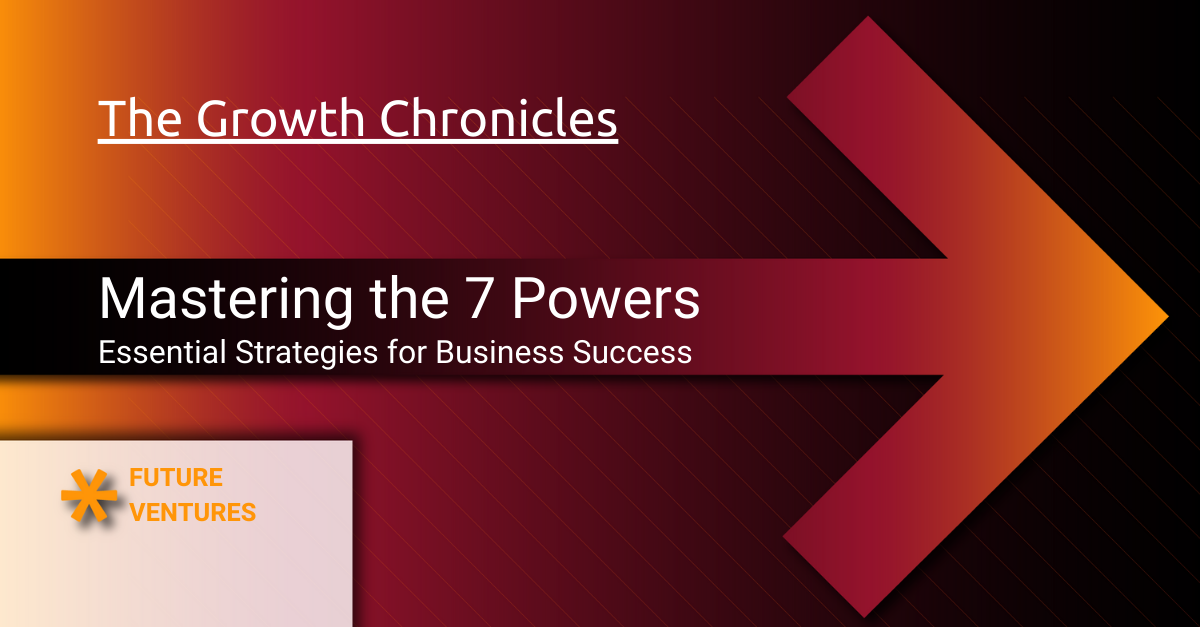Mastering Category Design: Essential Strategies for Business Success
In a world where markets are crowded and competition is fierce, the secret to extraordinary business growth lies not in outdoing rivals but in changing the game entirely. Category design is the transformative strategy that empowers companies to create new market spaces, define fresh narratives and become the undisputed leaders. The Category Kings of their industries.
This in-depth guide will take you through the fundamental principles, proven frameworks, and real-world examples of category design, equipping you with the insights and tools needed to craft your own category and dominate it. Whether you're a startup founder, an established business leader, or a curious strategist, this guide will illuminate the path from being a competitor to becoming a category creator.
Why Category Design Matters
Most businesses compete in existing markets, fighting over scraps. Category designers don’t. They create entirely new markets and then own them. Think of Tesla redefining cars as electric ecosystems or Airbnb reframing lodging as a peer-to-peer experience. They didn’t enter the game. They rewrote the rules. Companies should strategize to create net-new territories instead of competing over existing market scraps. Most businesses focus on demand capture. Competing for existing customer demand in established categories often results in intense competition and limited growth opportunities. In contrast, category design is about demand creation: proactively generating new demand by educating the market and using lead generation to build an audience eager for your solution.
Category design is the art and science of creating, naming, and owning a new category of business. Done right, it delivers exponential growth, industry leadership, and long-term defensibility. Done wrong, it’s a graveyard of “disruption theatre.” The demand for category designers is growing exponentially as businesses increasingly recognize their transformative potential. Companies that utilize category creation can often market to a captive audience that understands the need for the new product or service. Category design involves educating the market about the new problem and solution proposed by the company.
If you’re a founder, CEO, or business owner trying to scale, the decision is simple: either fight as a commodity or design your own playing field.
What is Category Design?
Category design is not just branding or marketing. It’s a holistic business strategy that aligns product, business model, and messaging to shape how the world perceives your company. Category creation typically involves developing a new market that consumers are not yet aware of, while category design mainly focuses on an existing market.
- Category Creation: Defining a new space in the market.
- Category Naming: Giving that space language people can rally behind.
- Category Ownership: Positioning yourself as the king of that space.
Legendary category designers, from Steve Jobs to the team at Play Bigger, treat it as the ultimate growth strategy. Companies and individuals who effectively design their category can potentially have no competition. A unique point of view differentiates a company and attracts customers.
Category design thinking is the structured, strategic approach that underpins successful category design, guiding the process of shaping a new market category and building long-term differentiation.
Understanding Different Categories
Understanding different categories is the cornerstone of any successful business strategy. Rather than battling for attention in a crowded existing category, legendary category designers focus on creating a new market category, where they can lead and define the rules. As highlighted in Harvard Business Review, the most legendary category designers don’t just compete; they create new categories that unlock exponential growth and position their companies as the category king.
By mastering category design strategies, businesses can identify opportunities to introduce a new category or multiple new categories, thereby setting themselves apart from competitors who remain stuck in outdated paradigms. Category design advisors emphasize the importance of developing a unique point of view and crafting a narrative that resonates with customers, analysts, and the broader market. This approach not only drives near-term revenue but also lays the groundwork for long-term dominance in a new market.
Whether you’re targeting a new market category or reimagining an existing one, understanding the landscape of different categories allows you to make strategic decisions that can transform your company’s trajectory. The right category strategy can mean the difference between incremental growth and becoming the next category king.
The Four Types of Design
To avoid confusion, let’s anchor this in the broader design world. There are four types of design relevant to business strategy:
| Type of Design | Definition | Example |
|---|---|---|
| Product Design | Crafting the features and functions people use | iPhone’s touch interface |
| Business Model Design | Structuring how value is created and captured | Netflix’s subscription model |
| Experience Design | Shaping customer touchpoints and emotions | Disney theme parks |
| Category Design | Creating and owning a new market | Peloton’s “connected fitness” |
Product design, business model design, experience design and category design are of equal importance for achieving business success.
You may master product or experience design, but without category design, you’re often just polishing features in someone else’s sandbox.
The Three Types of Category Strategy
Category designers employ three strategic plays: they often merge unrelated categories to create a new market space, redefining how industries operate and opening up previously untapped opportunities. Implementing the eight category levers can create massive differentiation for a company in its market.
- Category Creation: Inventing something entirely new (Airbnb).
- Category Split: Reframing an old category into two, claiming the better one (Tesla: electric vs. internal combustion engine).
- Category Expansion: Stretching a category to include new needs (Amazon: from books to “everything store”).
Understanding and orchestrating category shifts is key to unlocking new market opportunities and staying ahead of competitors.
Your job is to decide: are you creating, splitting, or expanding?
The Category Design Scorecard
How do you know if you’re on track?
Use this Category Design Scorecard to measure progress: The scorecard evaluates companies by scoring them in five key areas on a scale of 0 to 2, providing a clear framework for assessing category design success.
When reviewing companies using the scorecard, you determine whether a company partially or successfully accomplishes each key dimension of the category design, helping to assess whether the company has successfully achieved its strategic goals or if further progress is needed.
| Dimension | Question | Score (1–5) |
|---|---|---|
| Problem ClarityProblem Clarity | Have you defined a problem that’s obvious and urgent? | |
| Category Name | Is your category name simple, memorable, and ownable? | |
| Narrative | Does your story reframe the market in your terms? | |
| Product Fit | Does your product embody the category? | |
| Ecosystem Buy-in | Are analysts, media, and partners using your language? | |
| Market Leadership | Are you seen as the default leader in the space? |
A score under 15 means you’re still tinkering. Over 25? You’re on the road to being a Category King.
Why Category Design Beats Competing on Features
Features are easy to copy. Categories are not. The trade-offs inherent in existing categories often limit growth and innovation, which is why category design is so powerful. Keurig’s single-serve coffee pod wasn’t just a feature; it was a whole new category. Competitors scrambled to copy, but Keurig already owned the conversation. Superconsumers generate a disproportionate share of category profits and sales, representing about 10% of consumers but driving up to 70% of sales.
When you’re a category designer, you’re not just better, you’re different.
Becoming a Category King
The goal isn’t just to play, it’s to own the category. Category kings capture 70–80% of the category’s economics. That’s not hyperbole; it’s backed by research in “Play Bigger.” Companies that create new categories or redesign existing ones capture a larger market opportunity than those that simply compete.
Examples:
- Google dominates “search.”
- Zoom dominates “video meetings.”
- Stripe dominates “developer-first payments.”
Companies dominating their categories achieve this through strategic category design and by shaping market perceptions, rather than just competing on features or existing demand.
Becoming king means shaping how analysts, journalists, and customers frame the problem itself.
Examples of Category Design in Action
Here are some category design examples that illustrate how companies have successfully created and owned new categories:
- Tesla: Didn’t market cars; marketed the future of energy.
- Airbnb: Didn’t compete with hotels; reframed travel as “belonging anywhere.”
- Keurig: Didn’t sell coffee machines; sold convenience and variety in pods.
- Salesforce: Coined “No Software” and built the cloud CRM category. Creating a narrative around a unique point of view is essential for successful category design. Customers often become advocates when they resonate with a company’s perspective.
Each example shows the same play: problem → reframe → category → ownership.
Working with Category Design Experts
Category design is hard. Category Design experts exist for a reason. They help you:
- Avoid “me-too” traps.
- Build a compelling category narrative.
- Rally your ecosystem around your language.
If you’re scaling, you don’t just need marketers. You need advisors who specialize in category creation. Effective marketing strategies need to focus on educating the market about a new category, ensuring that customers understand its unique value proposition. A successful marketing strategy is one that aligns closely with the needs and values of Superconsumers.
To stay updated on the latest thinking and strategies in category design, follow the greatest category designers on social media platforms or subscribe to their newsletters.
Naming Your Category
Category names are weapons. A good one is:
- Simple: Easy to say, easy to repeat.
- Descriptive: Explains itself.
- Aspirational: Bigger than just your product.
Examples:
- “Cloud Computing” (Salesforce, Amazon).
- “Connected Fitness” (Peloton).
- “Plant-Based Meat” (Beyond Meat).
Get the name wrong, and you risk confusion or dilution of your brand. Get it right, and you own the mental shelf space.
Branding and Category Design
Branding and category design are closely intertwined. Your brand is not your logo; it’s the mental category you occupy in someone’s head.
Nike doesn’t sell shoes. It sells athletic identity. Coca-Cola doesn’t sell sugar water. It sells happiness and togetherness.
The category defines the brand, and the brand strengthens the category. Perceived value is largely determined by the category a brand occupies, directly influencing customer decisions and the overall strength of the brand. Developing a unique and consistent narrative around the category can significantly influence consumer perceptions, making the brand synonymous with the category itself.
Creating a Point of View and Category Languaging
Creating a compelling point of view and mastering category languaging are essential steps for any business aiming to become a category king. Your point of view is the unique lens through which you see the market—a bold statement about what’s broken in the current landscape and how your new category offers a radically better future. Legendary category designers, as profiled in Play Bigger, have shown that a strong point of view is the foundation for building a new and different category that captures the imagination of customers and the market.
Category languaging is the art of using strategic language to draw clear lines between the old way and your new category. It’s about giving your audience the words they need to describe the problem and your solution, making your new category easy to understand and talk about. This is how legendary category designers create movements, not just products.
The category design scorecard can help you evaluate how effectively your company is developing its point of view and category languaging. By focusing on these elements, you can ensure your business stands out in a crowded market, attracts loyal customers, and positions itself as the undisputed leader in a new and different category.
The Role of the Category Creator
Category creators are market visionaries. They see what others miss.
- Steve Jobs: Reframed phones as lifestyle devices.
- Elon Musk: Reframed cars as nodes in an energy ecosystem.
- Sara Blakely (Spanx): Reframed women’s hosiery into a lifestyle and empowerment category.
Innovators create new markets by envisioning possibilities others overlook and executing bold category design strategies.
As a founder, you are not just building a company—you are authoring a market story.
Company Strategy and Category Design
Your corporate strategy and category design must be inseparable. Ask yourself:
- Is our business model aligned with our category?
- Does our product roadmap reinforce the category narrative?
- Do our investors and employees understand we’re not just competing, we’re creating?
Company design, selecting the right business model, and innovating the profit model are fundamental to successful category design. Breakthrough business models often underpin category leaders, and aligning business models with your category strategy is essential for long-term success. Innovating your profit model and ensuring your company design supports your category vision can differentiate your business and drive market leadership.
Amazon didn’t build a bookstore. It built the “everything store.” That strategic alignment made category ownership possible.
Avoiding Category Pirates
Once you design a category, expect pirates. These are copycats who try to ride your narrative.
- Uber faced a wave of clones (Lyft, Didi, Ola).
- Peloton triggered waves of “connected bike” startups.
How do you fend them off?
- Move fast.
- Strengthen your brand narrative.
- Use data to keep redefining the category.
Category pirates thrive on your complacency. Ongoing strategic efforts are essential to defend your category and stay ahead of imitators.
Using Data to Inform Category Design
Category design is not just intuition—it’s data-driven. The Data Flywheel allows companies to anticipate consumer demand and improvements based on data collected from their category and customers, creating a self-reinforcing cycle of innovation and market leadership. Legendary marketing strategies are built around creating demand instead of competing for existing demand. Utilizing data insights effectively can anticipate future consumer demand and strengthen marketing strategies.
Data helps you:
- Spot unmet needs (customer pain points).
- Validate urgency (is this a “nice-to-have” or a “must-have”?).
- Track adoption curves (are you creating a mass movement?).
Amazon and Google dominate categories because they relentlessly mine data to anticipate behaviour before customers articulate it.
Companies generate data not only to anticipate consumer demand but also to improve customer outcomes and build lasting competitive advantages.
Overcoming Cognitive Biases
Category design often encounters cognitive biases, which are mental shortcuts that hinder innovation.
- Status Quo Bias: Customers prefer familiar solutions.
- Confirmation Bias: Teams tend to interpret data in a way that supports their existing beliefs.
- Loss Aversion: People fear switching more than they value gains.
As a category designer, your job is to reframe reality so the switch looks safer than staying put.
Example: Salesforce’s “No Software” didn’t sell features. It sold relief from IT nightmares.
Establishing a Strong Brand Identity
Brand identity is oxygen for category design. Without it, your category suffocates.
- Be consistent: Every touchpoint should reinforce the narrative.
- Be authentic: Customers can smell hype and inauthenticity.
- Be bold: Safe brands rarely win new categories. Marketing strategies should include creating memorable experiences for consumers to frame the new category better.
A strong, authentic brand identity is crucial for attracting customers and building advocacy for your new category.
Nike’s “Just Do It” didn’t sell shoes. It sold participation in a movement. That’s category design at work.
Pitching Your Category to Investors
Pitching your category to investors is a pivotal moment in your journey to becoming a category king. Investors are not just looking for incremental improvements. They want to back companies that can create new categories and capture massive market opportunities. To stand out, your pitch must clearly articulate your unique point of view, the new category you’re creating, and why your company is positioned to dominate it.
Drawing on insights from the Harvard Business Review and the expertise of category design advisors, a successful pitch highlights how your business model, narrative, and strategy align to create and own a new category. Emphasize the potential for exponential growth, the size of the new market, and your plan to become the category king. Use compelling category languaging to make your vision tangible and memorable.
The category design blueprint is an invaluable tool for structuring your pitch. It helps you map out the problem, your solution, the new category, and your path to leadership. By mastering the art of pitching your category, you can attract the right investors, secure the funding you need, and set your company on the path to category dominance.
Case Study: Zoom vs. WebEx
Zoom didn’t win solely on the basis of better features. It reframed video calls as frictionless, reliable, and human compared to clunky WebEx.
- Category: “Modern Video Meetings.”
- Narrative: “It just works.”
- Result: Dominance during COVID-19, when the world needed a new default. Zoom’s approach redefined the entire category of video meetings and set a new benchmark for the industry.
This is the category king effect in real time.
Example of a Category in Marketing
One classic example: energy drinks.
Before Red Bull, “soft drinks” were just colas and juices. Red Bull invented a new category: energy drinks.
- Category Creation: “Functional beverage for stamina.”
- Category Name: “Energy drink.”
- Category King: Red Bull still owns ~40% of the global market share.
By inventing the energy drink category, Red Bull achieved substantial sales and sustained commercial success.
This shows the formula: new language + new frame = new industry.
The Futurist Lens: What’s Next for Category Design?
The next decade will see categories emerge around:
- AI Agents: Not apps, but autonomous agents that act for you.
- Synthetic Biology: New categories of food, medicine, and materials.
- Climate Tech: Net-zero tools reframing industries from steel to travel.
- Neurotech: Brain-computer interfaces creating new human experiences.
The next era of category design will be defined by the ability to envision the future category reimagined. Crafting a compelling future that inspires both customers and markets. Leaders will focus on creating a new and different future for entire industries, moving beyond current trade-offs and limitations to set a bold, transformative vision.
If you’re a founder today, your best play may be to design tomorrow’s categories before they’re obvious.
Practical Steps to Begin Your Category Design Journey
- Identify the Problem: Find a pain point no one else has articulated.
- Reframe the Conversation: Position the problem as urgent and the old solutions as obsolete.
- Name the Category: Create simple, sticky language.
- Own the Narrative: Evangelize relentlessly until analysts and media adopt it.
- Defend and Expand: Keep innovating before the “category pirates” catch up.
To succeed in category design, develop a clear category blueprint that visually and strategically outlines your approach. Articulate a compelling category POV to frame the core issues and your vision for the future. Aspire to become the category queen by shaping consumer perception and leading your market. Explore radically different manufacturing and radically different distribution methods to set your offering apart. Support your efforts with high-level strategic marketing, innovative marketing plans, and precise tactical marketing to drive category adoption and growth.
Conclusion: Play Bigger or Be Forgotten
Category design is not a nice-to-have. It’s the difference between:
- Competing for 1% scraps in an old market.
- Owning 70% of the value in a new one.
Category design is a management discipline that empowers both small business owners and large enterprises to create new market categories. The vast majority of value accrues to those who understand the difference between category creator versus competitor, making this approach essential for driving near-term revenue and long-term growth.
You can build a better product and still lose. But if you design the category, you write the rules, own the language, and shape the future.
The choice is simple: be a commodity, or be a category king.










